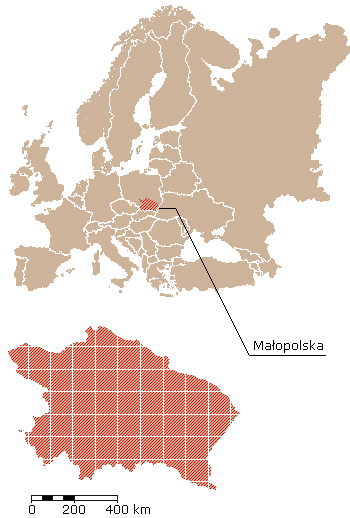|
|
|
The mission of the Global Biodiversity Information Facility (GBIF) is to make the world's primary data on biodiversity freely and universaly available via the Internet. Functionally, GBIF coordinates and supports the development of the worldwide capacity to access the vast amount of biodiversity data held in natural history museum collections, libraries and databanks.
Poland joined GBIF in January 2004 constituting Polish Biodiversity Information Facility. Institute of Environmental Sciences Jagiellonian University is one of the first members of the Polish platform.
Institute of Environmental Sciences has diffused data on 165 bird species occuring in Małopolska. These data were originally published in The Atlas of Breeding Birds in Małopolska 1985-1991 (Walasz and Mielczarek, 1992).

|
|
Cover of The Atlas of Breeding Birds in Małopolska 1985-1991
|
Małopolska amounts to 1/5 of the total area of Poland (60198 km2) and is characterised by the most diversified physiography - includes the Małopolska Upland, the Podkarpacie with the Vistula Valley and the Carpathians. The area of Małopolska has been divided up, using grid of geographical coordinates, into 67 atlas blocks where information on avifauna richness were collected. Each record of our database contains species name, the year of observation and geographical coordinates (middle of the atlas bloc; WGS83).

|
|
|
The Tatra Mountains are the only place of occurance of Wallcreeper Tichodroma muraria in Poland. Additionaly, almost all Polish population of the following species occur in Malopolska: Black-crowned Night Heron Nycticorax nycticorax, Western Capercaillie Tetrao urogallus, Hazel Grouse Bonasa bonasia, Ural Owl Strix uralensis, Syrian Woodpecker Dendrocopos syriacus, European Bee-eater Merops apiaster, Water Pipit Anthus spinoletta, Grey Wagtail Motacilla cinerea, White-throated Dipper Cinlus cinclus, Alpine Accentor Prunella collaris, Ring Ouzel Turdus torquatus.
Further information:
|

